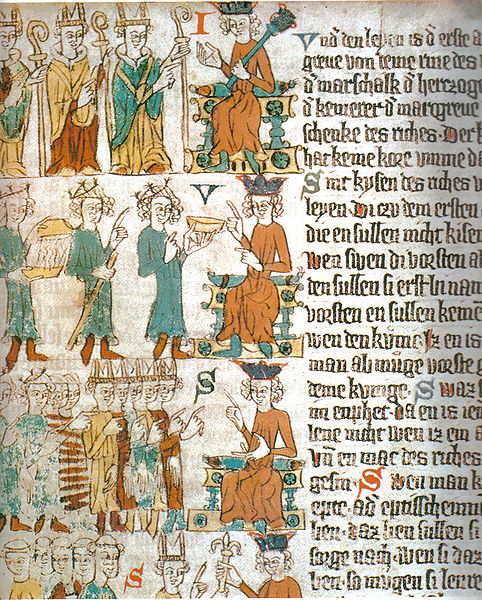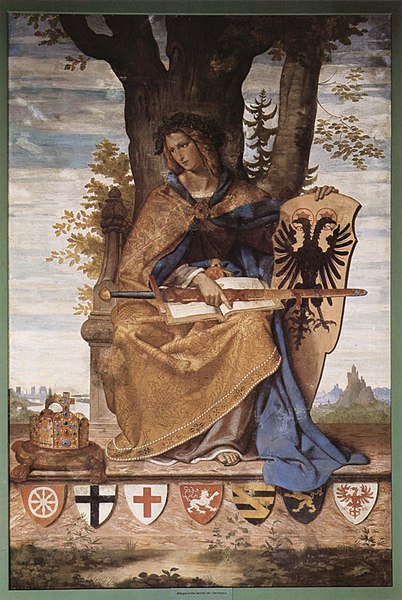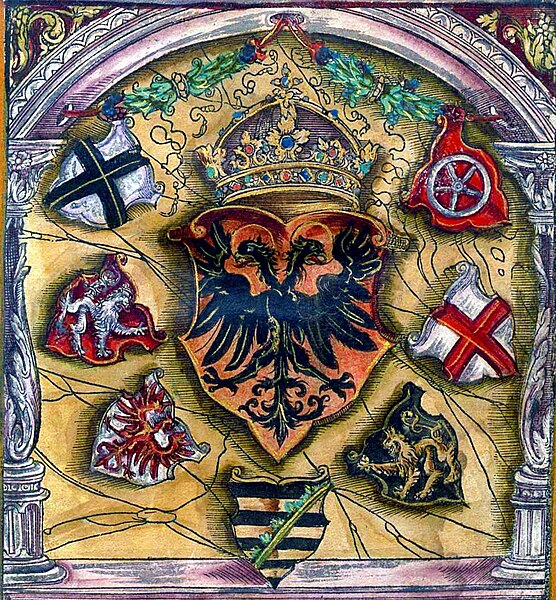The Electorate of Hanover was an electorate of the Holy Roman Empire, located in northwestern Germany and taking its name from the capital city of Hanover. It was formally known as the Electorate of Brunswick-Lüneburg. For most of its existence, the electorate was ruled in personal union with Great Britain and Ireland following the Hanoverian Succession.
Image: King George I by Sir Godfrey Kneller, Bt (2)
Image: George II of Great Britain 1730 50
Image: George III of the United Kingdom
The prince-electors, pl. Kurfürsten, Czech: Kurfiřt, Latin: Princeps Elector) were the members of the electoral college that elected the ruler of the Holy Roman Empire.
The imperial prince-electors Left to right: Archbishop of Cologne, Archbishop of Mainz, Archbishop of Trier, Count Palatine, Duke of Saxony, Margrave of Brandenburg and King of Bohemia (Codex Balduini Trevirorum, c. 1340)
Choosing the king. Above: the three ecclesiastical princes choosing the king, pointing at him. Middle: the Count Palatine of the Rhine hands over a golden bowl, acting as a servant. Behind him, the Duke of Saxony with his marshal's staff and the Margrave of Brandenburg bringing a bowl of warm water, as a valet. Below, the new king in front of the great men of the empire (Heidelberg Sachsenspiegel, around 1300).
Coats of arms representing the seven original electors with the figure of Germania. Original colours were vivid. Germania's gown was gold, not beige, and the blue-grey was purple. Also, the browns were painted as vivid red and the muted grey in Saxony's arms was a brilliant green.
Coats of arms of prince electors surround the Holy Roman Emperor's; from flags book of Jacob Köbel (163#+1545). Left to right: Cologne, Bohemia, Brandenburg, Saxony, the Palatinate, Trier, Mainz







